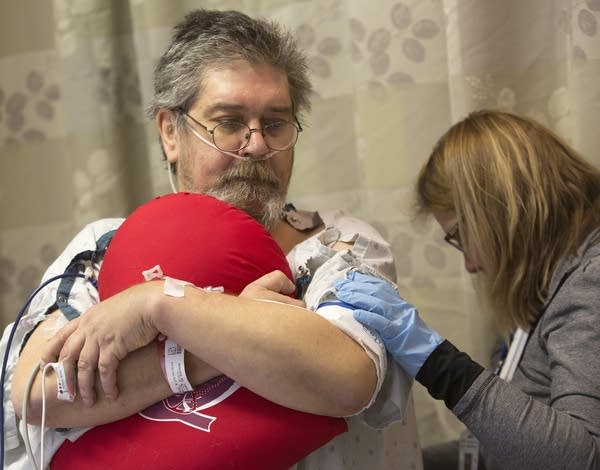MN hospitals' error levels stay flat

Go Deeper.
Create an account or log in to save stories.
Like this?
Thanks for liking this story! We have added it to a list of your favorite stories.
Hospitals say they are learning a lot, but eliminating errors is tougher than anyone thought it would be. Over the year ending last October, there were 316 adverse patient events — slightly higher than the year before, and on par with past years, according to a state Health department report released Friday.
In 16 cases, the patients died. Ninety-three other incidents were labeled serious. Combined, fatal and serious injuries account for 34 percent of the total.
Minnesota has been tracking medical errors for a dozen years in an effort to identify problem areas and prevent future mistakes. And Minnesota hospitals have made some limited progress in cutting down on injuries to patients.
Patient falls declined to 67, the lowest number ever reported, after a campaign to modify patient bathrooms where falls are concentrated. There were fewer surgical errors following years of little improvement.
Turn Up Your Support
MPR News helps you turn down the noise and build shared understanding. Turn up your support for this public resource and keep trusted journalism accessible to all.
Rahul Koranne, chief medical officer for the Minnesota Hospital Association, said surgery teams did a better job removing all foreign materials from patients' bodies. The report shows the count dropped by a third to 22 patients.

"So we see that our packing and the sponges that we used to leave decades ago are no longer being left in," Koranne said.
But the trend for another surgical category went in the wrong direction.
Twenty-nine patients had procedures performed on the wrong body part. Spinal surgeries made up a third of the cases.
Koranne said spinal surgery is complex and similar errors have been reported throughout U.S. hospitals, particularly with minimally invasive procedures.
"The surgeon is in there with a very small incision," Koranne explained. "And it's looking at the spine, all of the levels of which look very similar."
In other cases of wrong site procedures, hospital data show that surgical staff sometimes skipped established protocols that should have alerted them to their mistake.

The Minnesota Time Out process is a brief pause prior to surgery that is intended to give staff time to verify a patient's name, the procedure being performed and the body part being operated on. But an urgent medical situation may trump the protocol.
Hospitals report completing all steps of the voluntary process only 68 percent of the time.
"We all know that it can be easy to put something in place, but getting it hardwired and getting it really to be part of the culture in the operating room or the procedural areas can be a little tougher," said Rachel Jokela, director of the Adverse Health Events Program at the Minnesota Department of Health. "I think we all probably wish that getting to that lasting change was easier or maybe a little quicker. But it's very hard work."
A skin-care team at Hennepin County Medical Center can attest to the work involved in making hospital care safer.

Nurse Kim Schneider examines the skin of a severely injured patient who is wearing a neck brace. She checks for any signs of redness or irritation around the device that could indicate pressure ulcers. Commonly known as bed sores, they can grow into gaping wounds. Bedsores have consistently been the most frequently reported adverse event in Minnesota hospitals. There were 104 cases statewide last year.
But none were in HCMC's surgical intensive care unit, an area of the hospital that traditionally has the highest rates of pressure ulcers.
Nurse Beth Heather credits her team's success to a $10,000 grant she received to train nurses on the safe removal of protective braces to check a patient's skin.
"And just short periods of removing complete pressure made a huge difference and then you get a really good skin inspection," Heather said.

But it's labor intensive work. On average it takes 19 minutes to do a full-body skin check. And usually a few nurses need to help. It's not necessarily an approach that all hospitals could manage or afford.
HCMC made posters and videos of its skin training program anyway and has shared them with the Minnesota Hospital Association, so other hospitals can benefit from what HCMC has learned.


